Second Type 26 City Class frigate HMS Cardiff now looks like a warship as the aft end of the vessel was placed behind forward prior to being joined together in Govan, here’s some drone footage!
BAE Systems’ engineers will soon join the sections together at the Glasgow shipyard on the River Clyde.
Post assembly, the ship will undergo additional structural work before being floated and transported to BAE Systems’ Scotstoun facility in 2024 for outfitting.
Here’s the footage!
Drone footage shows the immense scale of the vessel as it becomes part of the Glasgow skyline. In a while it'll be moved onto a barge and lowered into the river before heading to Scotstoun to be fitted out. pic.twitter.com/Pf5aYB732A
— George Allison (@geoallison) July 2, 2023
Simon Lister, Managing Director of BAE Systems’ Naval Ships business, expressed pride and satisfaction in the progress. “The emergence of HMS Cardiff is a very proud moment for everyone involved in her construction. We have now completed all major units of the ship and in the coming weeks our skilled teams will consolidate the ship in preparation for next year’s float off,” Lister said.
He added that the rollout is an “opportunity for us to celebrate the achievement being made with our colleagues, suppliers, customer and the cities of Cardiff and Glasgow.”
The first Type 26 frigate, HMS Glasgow, is currently being outfitted at BAE Systems’ Scotstoun facility. The construction of the eight Type 26 frigates is expected to last to the mid-2030s.
HMS Glasgow is anticipated to be the first of the fleet to join the Royal Navy in the mid-2020s.
HMS Cardiff will be the last frigate to have its hull sections integrated in the open air on the hardstand. This is due to the construction of a new £100m-plus ship build hall at the Govan site, which will allow the integration process for the remaining six ships to take place under cover, making it less susceptible to weather conditions.
More information on the drone footage
We have verified the drone footage as being legal, as we always do, but we thought it best to include this section.
In the United Kingdom, drone flights are managed by the Civil Aviation Authority (CAA), and adherence to these rules is essential to ensure the legal operation of drones. For the footage captured, the operator used a sub-250g drone.
Under UK legislation (Article 95 of the Air Navigation Order 2016), drones of this weight are exempt from minimum distance requirements from people, vessels, vehicles, and structures. Despite this exemption, the operator maintained a prudent distance from the shipyard and the ship, focusing the drone’s flight path over the river and nearby grassland as an added safety measure.
In addition to these legal requirements and precautions, the operator also followed several best practice guidelines to ensure the safe and legal operation of the drone. The operator was registered with the CAA and had secured the necessary Operator ID for the drone. Thorough pre-flight checks were conducted, including checking the weather for safe flying conditions and reviewing Notices to Airmen (NOTAMs) for any temporary airspace restrictions. During the flight, the operator actively monitored for nearby aircraft to avoid any risk of interference.
These thorough measures, while not all mandated by law, demonstrated the operator’s commitment to safety and regulatory standards, further ensuring the legality and safety of the drone flight.


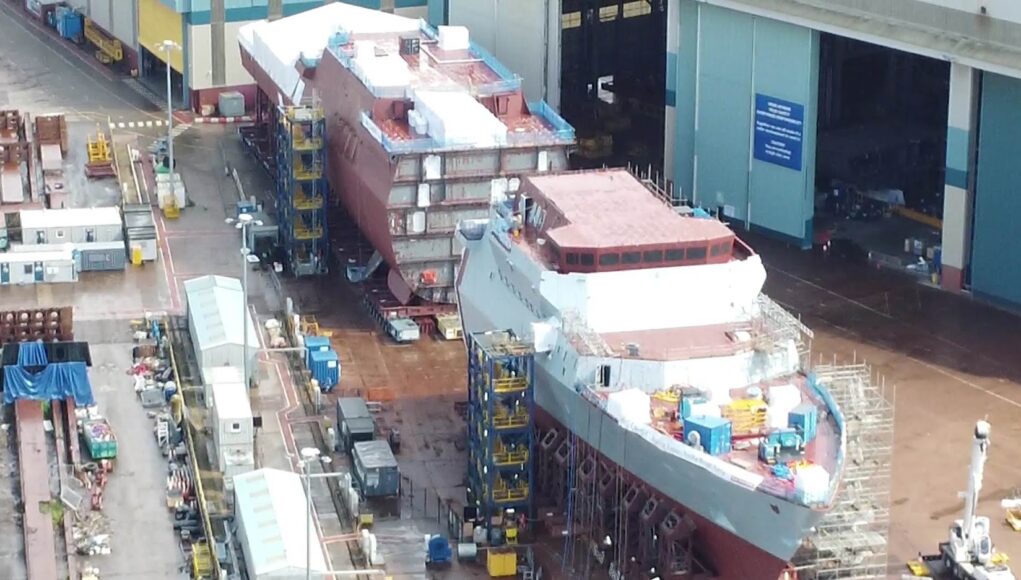

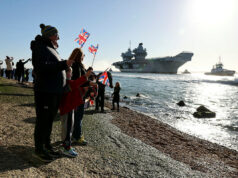


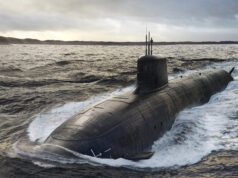
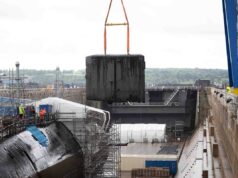
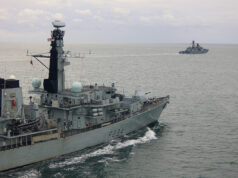
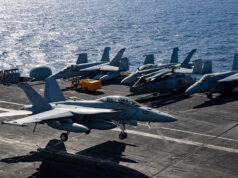

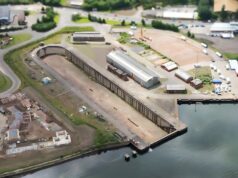


Will there not be a certain delay to the third ship as it seems a lot of work to do in the new build shed before it becomes operational. Yes sections can still be built but surely there must be some limit to them being joined together and built up if they will have to be transferred to the new building at some stage in manageable sections.I assume there is going to be a large side entrance to wheel them over, there is obviously room at the front of the present Hall to move them out and across so maybe it won’t be so difficult seeing how they can manoeuvre two halves of the ship the more I look at.
Might be just, the same block build continues in the current building, but this final welding of two largest blocks will take place in the new building, I guess?
I think it is very important because all the works done “outside” can be done “under the roof”.
No doubt some SNP comedian will pop up and claim it’s all faked, and there are no frigates being built in Scotland. Presumably the bits were smuggled into Glasgow at dead of night having been built in Europe!
There are no ships of any description at all in Scotland don’t you know. They’ve all been stolen by the wastemonster government to be used ramming small boats in the channel. /s
I can’t get over the way they build these ships in big blocks these days and then just join them together like a massive Airfix kit. Amazing!
Judging by the number of Decks on the Forward half of the stern section the machinery spaces seem quite slight maybe they are Airfix Dan
I didnt realise they are fitting an extra 25 metres in the midships. Impressive.
Arrrgh 3 sections that should sort it Johno
This is clearly HMS Birmingham, She’s painted in Aston Villa’s colours.